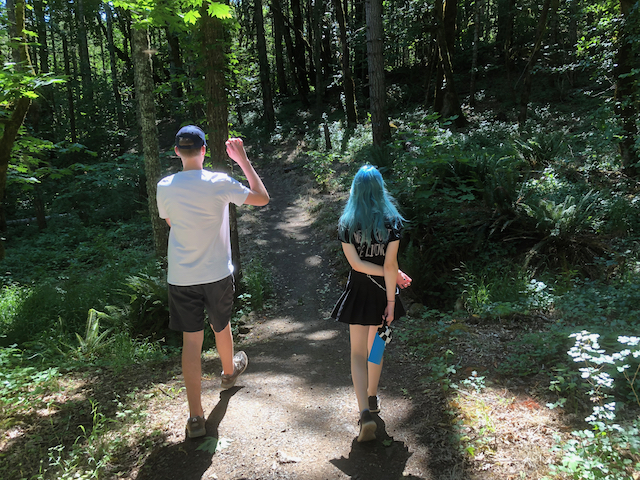Where does the time go? Our spunky strong little keto kid is now an official teenager. She loves animé, cosplay, and her friends. She finally got to dye her hair blue for her birthday. In our experience, kids take a huge running leap into teen years, then let the time catch up with them.

Nora’s last seizure was in April 2012; she is over 9 years seizure free. She eats a normal diet now, but hangs on to some of her keto habits. She still likes to eat her cereal with half and half, no plain old milk will do. She also takes tiny IKEA playset bowls of ice cream — the same ones you will see in old pictures on the blog — and eats it with a half-teaspoon measuring spoon to enjoy it slowly. She has grown tall and strong, kind and smart.
When she had her first seizures, the doctors hoped it was a fluke. Lots of kids have seizures. But when it happened again, they prescribed keppra. After 6 months, we weaned her off keppra and seizures came back. Then she started having myoclonics…it wasn’t a fluke anymore. We were scared and didn’t find many resources for mystery epilepsy (which is my way of describing her diagnosis: idiopathic benign myoclonic epilepsy). When keppra and depakote didn’t work, we learned that the ketogenic diet was more likely to work than a third drug. Thankfully, Dr. Wray was just starting at OHSU and became her doctor. The diet worked with some trial and error, and her seizures stopped. After 2 years of seizure-freedom on the diet, she weaned slowly to MAD, then fully off, and has been seizure free ever since. Grateful.
We started this blog for all of the parents who feel alone and scared for their precious kiddos. We also started it for ourselves, to document what we were going through and communicate with others. We’ve connected with a lot of parents through the blog over the years, met with a few families, exchanged many emails and texts and phone calls. We see you, and we hope that Nora’s story can be a ray of hope. We know that the diet doesn’t work for everyone and each child has a unique path. Look for the helpers, find support, and be an active member of your child’s medical team. You know your child better than anyone else and you have the strength and ability to help your child. Don’t give up. You’ve got this.
When we asked Nora’s first doctor about the ketogenic diet, he said “it’s really hard.” But you know what’s really hard? Watching your kid have seizures and wondering what that means for their development and life. The ketogenic diet was nothing compared to that stress and anxiety.
But the doctor was also right. The ketogenic diet is hard. It’s a grind. On top of learning, measuring, weighing, calculating, it’s helping your kids through the emotional turmoil of saying “no” to every fun food that other kids are having. It’s helping siblings through the fear and sometimes jealousy when the keto kid gets something “special.” It’s helping them figure out how to manage their own emotions, when you are managing your own. Sometimes the best answer is just to be empathetic. Affirm that this is really hard, and we are doing our best. It’s a good life lesson. Everyone struggles with something.
If your child has epilepsy and you are struggling to find the right treatment, or if you are just learning the diet, or if you are exhausted from the grind over many years: it’s hard. We’ve been there, we know what you are going through. You are doing your best. Be kind to yourself.

